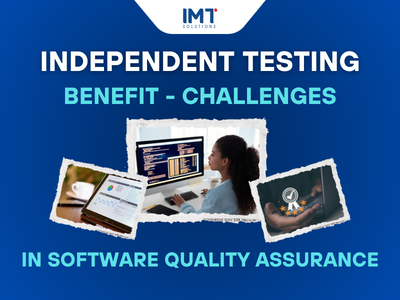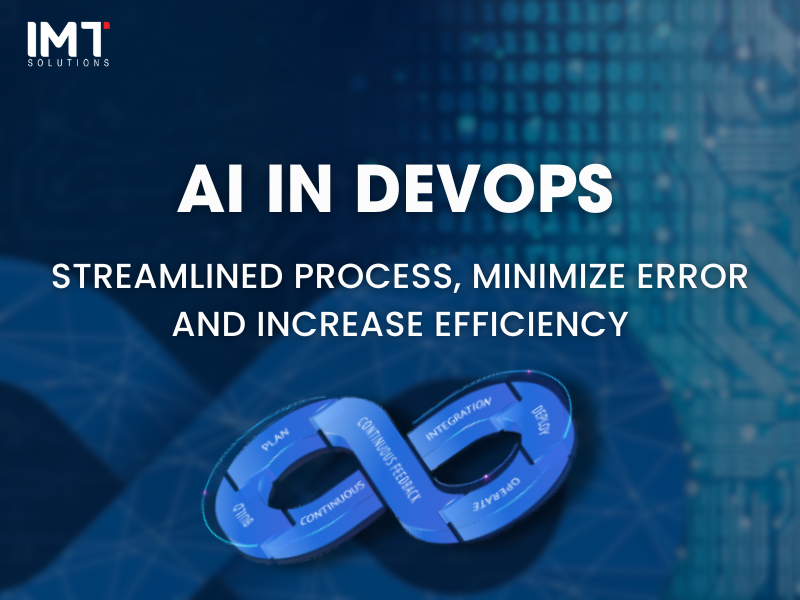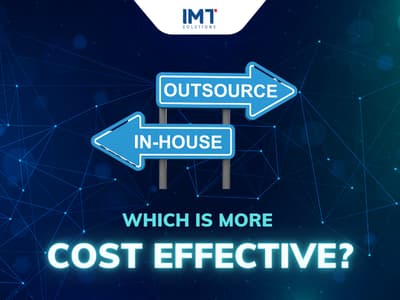How to start the digital transformation process
In the era of Industry 4.0, the digital transformation process has become a prevalent and indispensable concept. It plays a crucial role in reshaping how businesses and organizations operate globally. But what exactly is digital transformation that is so frequently mentioned? The article below will give you the answer to what is digital transformation? and how to start the digital transformation journey?
What is Digital Transformation?
Improving Customer Experience
Digital transformation has become a prevalent and indispensable concept in the era of Industry 4.0. It plays a crucial role in changing how businesses and organizations operate globally. Before starting the digital transformation process, you need to clearly understand its concept.
Digital transformation is the process of applying digital technologies to all aspects of a business or organization to change the way it operates, improve efficiency, and create new value. This process involves using technologies such as artificial intelligence (AI), the Internet of Things (IoT), cloud computing, big data, and automation to enhance productivity and optimize processes.
The benefits of digital transformation are widely applied by many businesses, such as using intelligent warehouse management systems and data analytics to forecast demand and optimize the supply chain. Meanwhile, a bank might implement AI to improve customer service and detect fraud.

Steps to Start the Digital Transformation Process
Step 1 – Define Objectives
Defining objectives is the first and most crucial step in the digital transformation process. Clear and measurable goals will help the business have a specific direction, focus on what is truly important, and achieve the desired results. First, the business needs to identify strategic goals related to digital transformation. These goals must align with the company’s vision and mission. For example, if the business wants to enhance customer experience, the objective could be to improve the CRM system to manage and interact with customers more effectively.
When setting goals, you should use the SMART model. Goals need to be Specific, Measurable, Achievable, Realistic, and Time-bound. This helps businesses easily track progress and adjust plans when needed. Instead of setting a vague goal like “increase revenue,” businesses should set a specific goal like “increase revenue by 20% within 2 years by using AI technology to optimize sales processes.” Additionally, digital transformation goals must align with the company’s overall business strategy. This ensures that all departments within the business are working towards the same goals and operating in sync.

Examples of specific digital transformation process objectives commonly seen:
- Increase revenue: Increase revenue by 20% within 2 years by using AI technology to optimize sales processes.
- Reduce operational costs: Reduce operational costs by 15% within 1 year by automating business processes using RPA (Robotic Process Automation).
- Improve customer experience: Raise customer satisfaction scores to 90% within 6 months by implementing a modern CRM system and personalizing customer service.
Enhance information security: Ensure 100% of customer data is encrypted and protected from cyber-attacks within 1 year by applying advanced security solutions.
Step 2 – Assess Current State
Assessing the current state is a crucial step to understand the present situation of the business before starting the digital transformation process. This helps identify the strengths, weaknesses, opportunities, and challenges of the business, thus building an effective digital transformation plan. You should use the SWOT model for analysis. Regarding Strengths, evaluate the available resources of the business such as technology, human resources, and finances. Consider if the business has a strong IT team, modern technological infrastructure, or abundant capital. Then, identify the current business processes that are working well and bringing high efficiency. For example, a quick production process or good customer service.
Regarding Weaknesses, identify outdated technologies that do not meet development needs. For instance, an obsolete information management system or a lack of data analysis tools. Additionally, evaluate employee capabilities and identify the skills lacking to execute the digital transformation process. Often, businesses will lack employees skilled in AI, Big Data.

Regarding Opportunities, recognize opportunities from current market trends such as the increasing demand for digital products and the development of e-commerce. Alternatively, leverage new technologies to improve business processes and create new value. For example, applying AI, Blockchain to optimize operations.
Read Digital transformation services in financial data management
Regarding Threats, identify competitors and other competitive factors. For example, the emergence of new businesses with advanced technologies. Additionally, identifying risks related to cybersecurity and information security is essential. For example, the risk of cyber-attacks and customer data loss.
After analyzing SWOT, assess the current processes by analyzing business processes and evaluating technology systems. In the business process analysis step, draw detailed flowcharts for each business process to understand the implementation steps and identify redundant or inefficient steps. Then, measure the time and cost for each process. Based on this, you can identify bottlenecks and optimization opportunities for your business. Finally, in this step, survey employees and customers to collect detailed and specific information on challenges and opportunities in the digital transformation process.
Step 3: Choose Technology
Choosing the right technology is a crucial step in the digital transformation process. Technology not only helps optimize business processes but also opens new opportunities for business growth. So, how do you choose the right technology for your digital transformation process?
First, you need to identify the technology needs of your business to address specific problems. Based on the results of the current state assessment, you can determine the specific issues that technology can solve. For example, if your business struggles with customer data management, you might need a Customer Relationship Management (CRM) system.
-system.jpeg)
Of course, you will have more than one issue. Therefore, categorize the needs in order of priority. For urgent needs such as customer information security, immediate deployment is necessary to address pressing issues. For long-term needs, such as technologies supporting the long-term development strategy of the business, consider implementing solutions that contribute to sustained growth. For example, an Enterprise Resource Planning (ERP) system to manage business resources more effectively.
After categorizing the issues, research and explore the available technologies in the market, such as:
- Customer Relationship Management (CRM) Technology: A CRM system helps manage and interact with customers more effectively. Popular options include Salesforce, HubSpot, OplaCRM,…
- Enterprise Resource Planning (ERP) Technology: ERP helps manage all business activities from finance and human resources to production. You can learn more about SAP, Oracle, Microsoft Dynamics,…
- Artificial Intelligence (AI) and Machine Learning: AI and Machine Learning help analyze data and predict trends. Tools such as TensorFlow, IBM Watson, Google AI, and others are notable options.
- Cloud Computing: Cloud Computing offers flexible data storage and management. Renowned service providers include AWS, Microsoft Azure, Google Cloud,…
- Big Data Analytics: Big Data helps process and analyze large volumes of data. Tools such as Hadoop, Apache Spark, Cloudera,…
Step 4 – Feasibility Assessment
After researching the technologies in the previous step, you need to ensure that the new technology can easily integrate with the current system of the business. Additionally, it must be scalable to meet future growth needs. For example, an ERP system should be able to support additional modules as the business expands. Most importantly, you should evaluate the total cost of ownership (TCO) of the technology, including deployment, maintenance, and upgrade costs. Compare it with the projected budget to see if the technology is a good fit for your digital transformation process.
Once you have chosen the appropriate technology, the next step in the digital transformation process is to select a technology provider. You should choose reputable providers by researching reviews and ratings on trusted websites. For example, consider reviews on Gartner or Forrester. Evaluate the provider’s experience and expertise in deploying technology for similar businesses. You can read the article 05 Questions before choosing a provider to know clearly how to evaluate the supplier’s ability. Or what you need to prepare before cooperating with them in this article.

Step 5 – Building and Implementing the Plan
Building a detailed plan is a crucial step to ensure the digital transformation process goes smoothly and effectively. A clear plan will help the business track progress, manage resources, and achieve the set goals. Therefore, you should plan in detail according to stages such as:
- Stage 1: Project initiation
- Stage 2: Preparation and testing
- Stage 3: Official implementation
- Stage 4: Evaluation and improvement
These are just suggestions, and you can adjust them to fit your company. Finally, a significant yet often overlooked part is risk management and contingency planning. Risks related to technology, such as system failures or hardware issues. Risks related to employees, such as lack of skills or resistance from staff. Or even risks related to the budget, such as exceeding estimated costs. Therefore, to ensure the digital transformation process is not interrupted, you should have contingency plans in place.
After implementation, don’t forget to monitor and evaluate progress. You should report progress and any issues encountered to make timely adjustments. Additionally, you should conduct comprehensive evaluations after each stage to learn and improve for the next stage.
Digital transformation process is not just a short-term project but a long-term strategy that needs to be invested in and executed seriously. While it’s a challenging journey, it also brings significant opportunities for businesses. To succeed in the digital transformation process, you need to carry it out carefully and have a detailed plan from start to finish. If you need any support with digital transformation, please contact us. We look forward to hearing about your issues and solving them for you.





